I photographed a variety of Sandhill Crane behaviors several weeks ago in Wayne County, Utah but among the most interesting was the aggressive displays of the males.
Disclaimer: These images were taken on a cloudy morning so the light was poor. To get enough shutter speed I was shooting at ISO 640 and then to exacerbate the problem for lack of time I sharpened these images globally rather than selectively so there’s obvious noise in the backgrounds.
1/1600, f/5.6, ISO 640, Canon 7D, 500 f/4, 1.4 tc, not baited, set up or called in
Based on behavior and size I believe each of these two birds to be males. Though the bird on the left is facing away from the other one this display was directed at the crane on the right.
1/1600, f/5.6, ISO 640, Canon 7D, 500 f/4, 1.4 tc, not baited, set up or called in
I believe that this display is a threat pose that researchers call the “ruffled bow”. I was amused by the bow-legged posture of the bird on the right as it observed the threat.
1/1600, f/5.6, ISO 640, Canon 7D, 500 f/4, 1.4 tc, not baited, set up or called in
The second bird responded with its own threat pose.
1/1600, f/5.6, ISO 640, Canon 7D, 500 f/4, 1.4 tc, not baited, set up or called in
And then came a response to the response by the first crane. As it did so the other crane reached to the ground and momentarily seemed to pick at something on the ground with its bill.
1/1600, f/5.6, ISO 640, Canon 7D, 500 f/4, 1.4 tc, not baited, set up or called in
Each bird did this several times.
1/1600, f/5.6, ISO 640, Canon 7D, 500 f/4, 1.4 tc, not baited, set up or called in
Finally the bird on the right picked up…
1/1600, f/5.6, ISO 640, Canon 7D, 500 f/4, 1.4 tc, not baited, set up or called in
a small clod of dirt or bit of straw but quickly flung it away. This is a common behavior among cranes during displays and I witnessed it several times.
Sometimes actual fights broke out during these displays but usually one bird would quickly fly off to avoid the fracas.
1/640, f/6.3, ISO 500, Canon 7D, 17 – 85 @ 85mm, not baited, set up or called in
I include this image to give you a feel for the setting and the light that morning. The cranes would fly in before sunrise to feed in the agricultural field and usually Canada Geese would come in later. Over the four days the number of cranes varied from 13 to 33 – there were more birds than this just out of frame.
Both aggressive displays between males and courtship dancing between bonded pairs were common and I was somewhat surprised how difficult it often was to distinguish between the two behaviors.
Sure was fun to watch though…
Ron


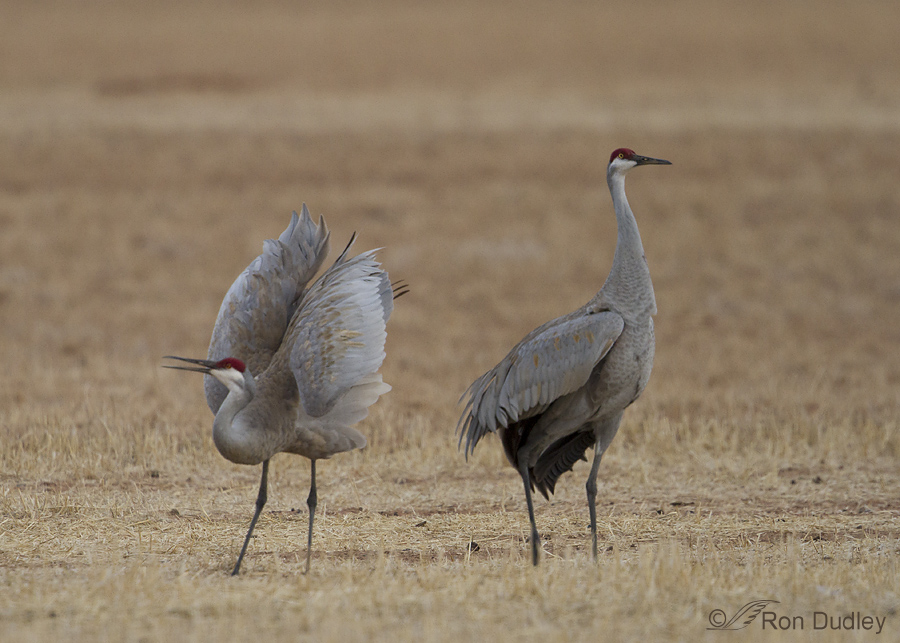
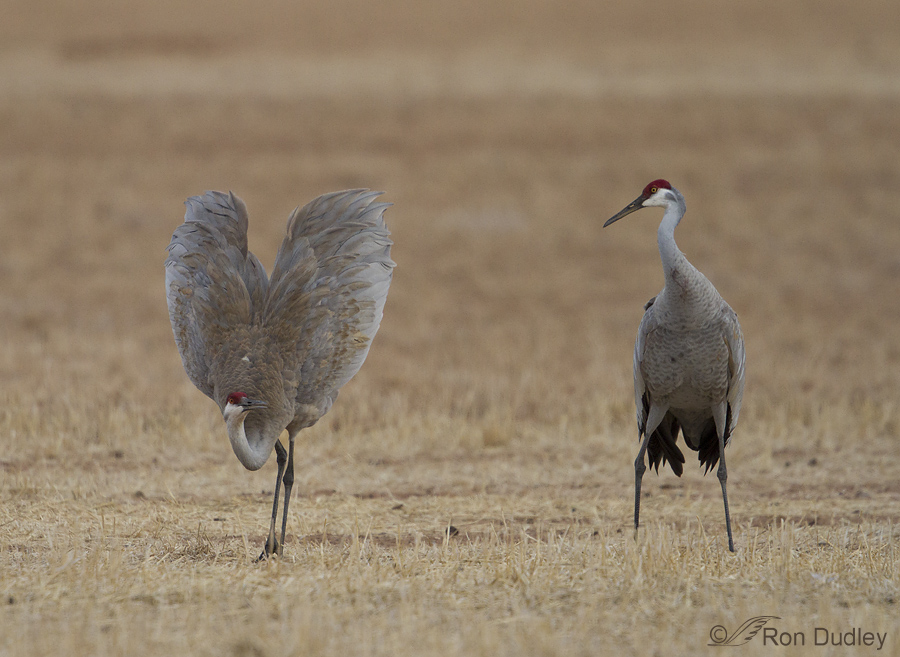
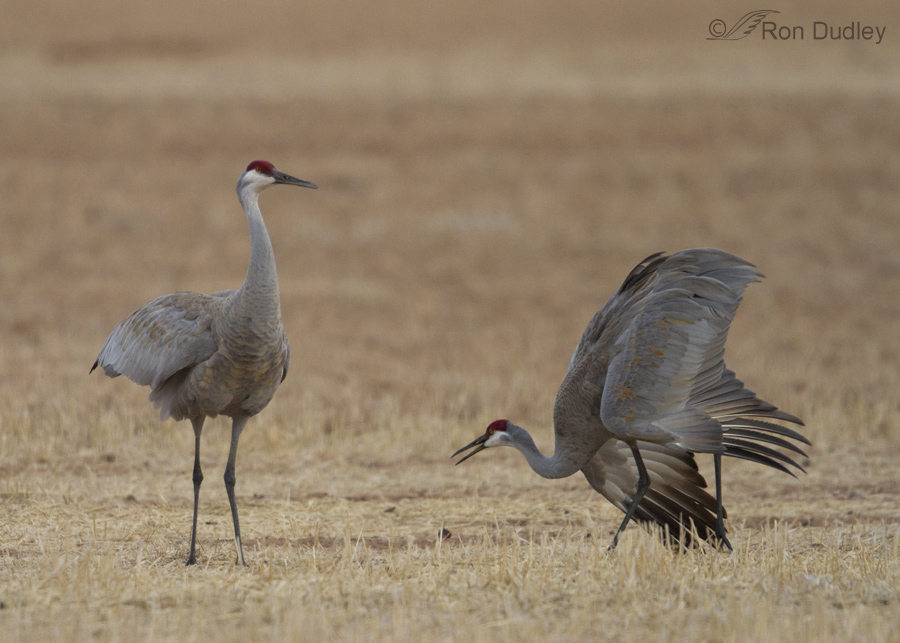
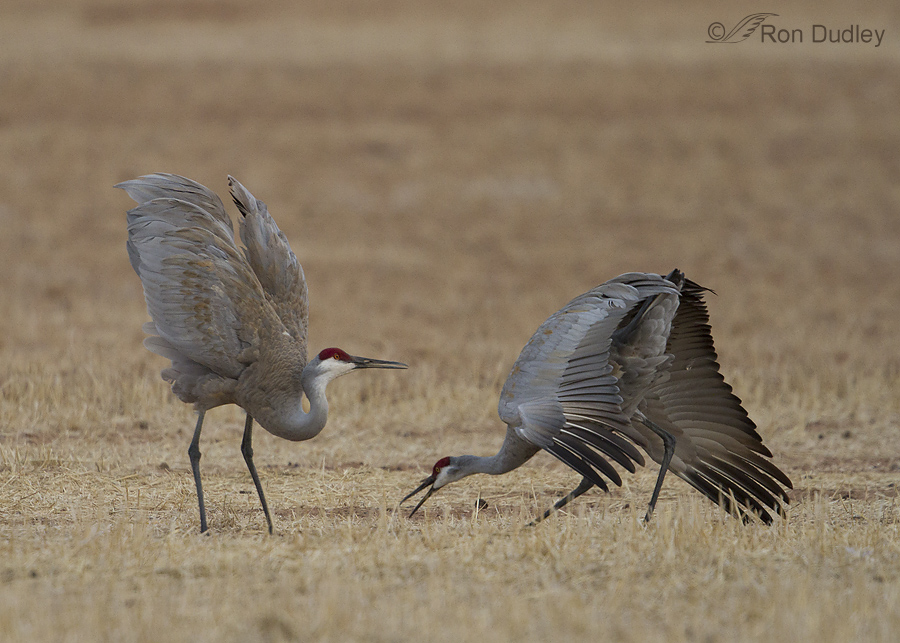
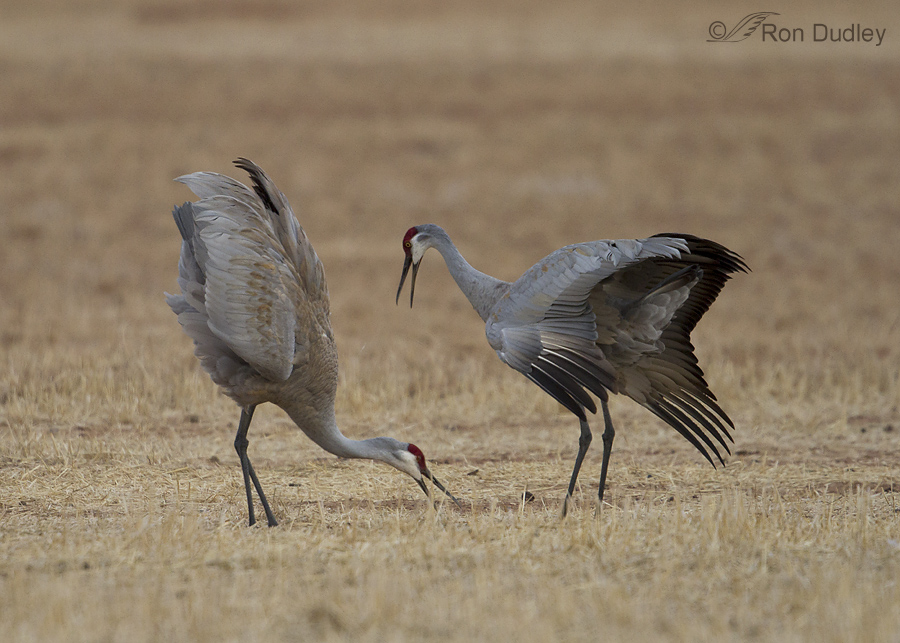
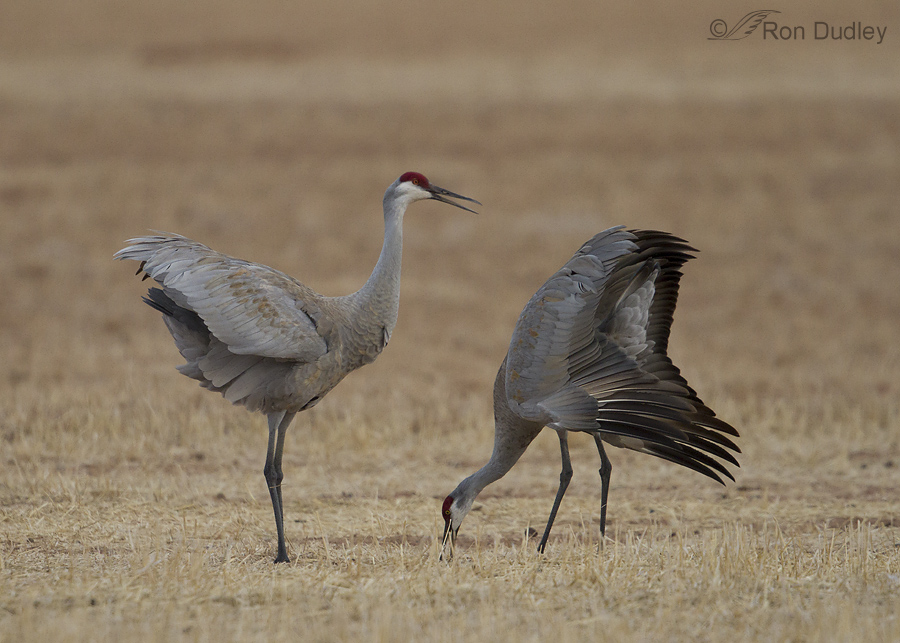
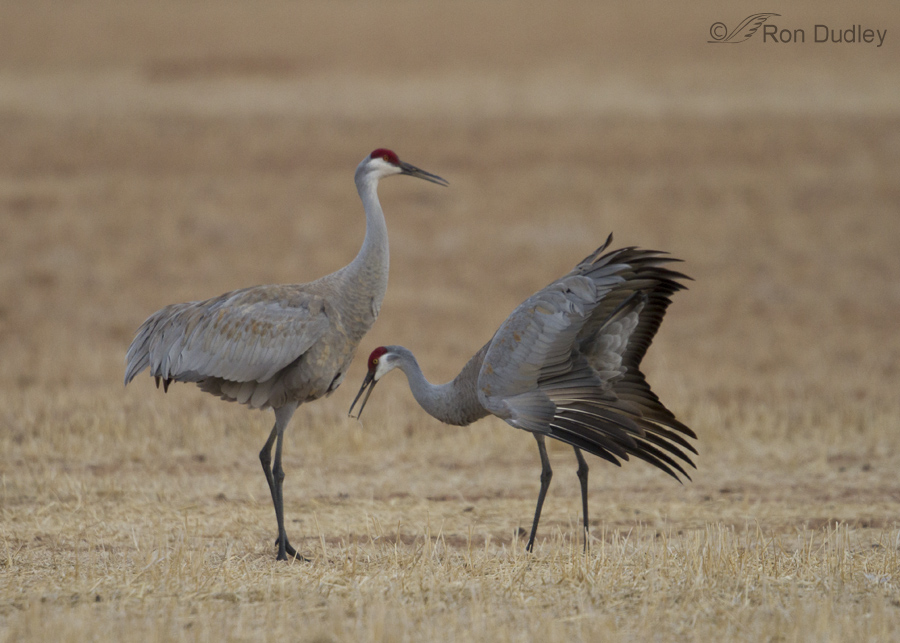
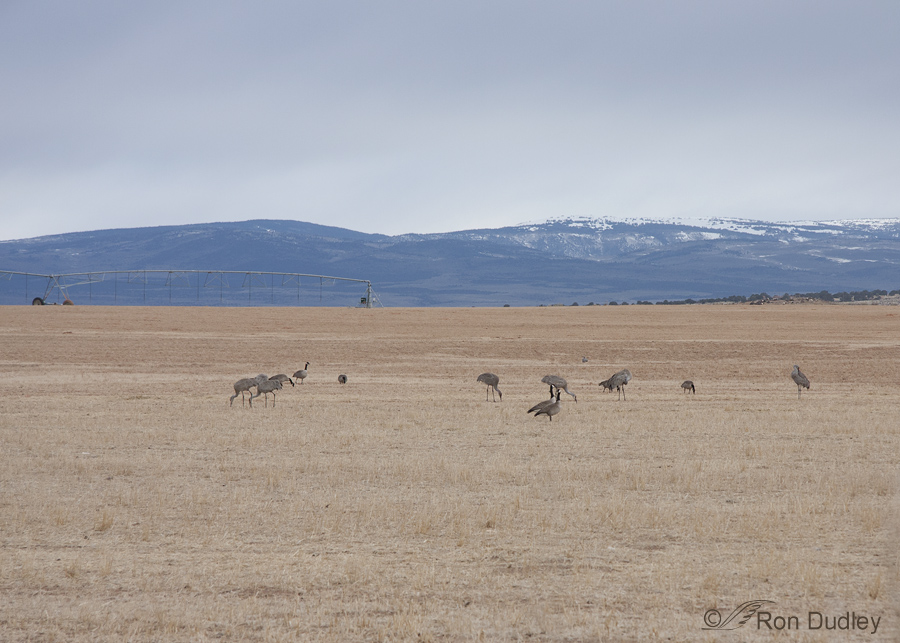
Hi Ron,
The series of postures is fascinating. I’m particularly struck by the birds alternately picking at the bit of straw or dirt. I know nothing about cranes but a thought off the top of my head… Do you thinking that the picking is a displacement behavior to help ritualize and defuse active aggression? I think of various mammals who stop in the middle of stressful situations and begin grooming to reduce tension and redirect attention. I wonder if that’s a reason for displaying male cranes to incorporate this seemingly unrelated, distracted gesture into their very stylized confrontation?
Interesting and provocative, as always. Thank you for sharing this sequence and its context.
Maya, that behavior is also part of their courtship dance so I suspect it wouldn’t necessarily be displaced aggression. However, I’m relatively unfamiliar with Sandhill Crane behaviors.
I’ve seen the dance but have never witnessed male threats and fighting. These are wonderful behavioral shots!
I noticed that these two birds have significant differences in their coloration. I never noticed that about sandhills before.
Pam, During some times of the year Sandhills have significantly stained plumage from probing in the dirt with their bills and then preening. That may be what you’re noticing.
Wonderful!!! Thanks!!! I think the bird on the right, in the second frame, couldn’t decide which way to go so tried to go in both directions at the same time…as for picking up bits of twigs, etc…. do you think they were getting ready to putt?
“do you think they were getting ready to putt?”
Once again you cracked me up, Patty. Yes, meet Arnold and Jack – the famous golfing Sandhill Cranes of Wayne County, Utah!
Choreographed aggression. What a wonderful, wonderful thing to see. Thank you for sharing some of the magic.
“Choreographed aggression”.
That says it well, Elephant’s Child.
Fascinating displays! Would be wonderful to learn more about them, and yet the mystery is engaging… Thanks so much!
It was a blast watching the displays and trying to interpret the behaviors, Alison. Thanks.
oh now these are just SO awesome, Ron!!!!!!!
Thank you, Lois.
I may seem to over-use this word – but just fascinating!
You can use that word as often as you like in describing my posts, Leisa! 🙂
What a wonderful record of behavior, sensational shots Ron!
Charlotte
Thank you, Charlotte.
Nice photos Ron. Are you sure these are threat displays and not the spring courtship dance? The SHCR’s have been doing lots of displays like this at Monte Vista NWR the past few weeks as they pair up, hence my question. They usually also leap into the air during their courtship dance. Your photos may be a threat display since it is hard to interpret with still photos versus video. Curious on your thoughts on this. Thanks Ron 🙂
No, I’m not absolutely sure, Ed. Like I said in my post it was often difficult to distinguish between the two behaviors. I did see bonded pairs dancing several times but these two didn’t dance and I believe both of them were males. I could be wrong though…